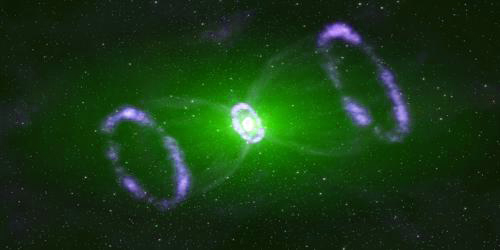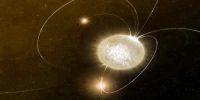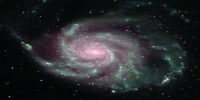Death of a Star
At night we see innumerable light points twinkling in the clear blue sky. These are called stars. Through naked eyes, we see thousands of stars. Stars are burning boiler composed of gases and dust particles. It is thought that through a giant explosion (called big-bang) this universe was formed. In the earlier stage throughout space cold hydrogen, helium and other gases were distributed all over. It is called a dust cloud. In the dust cloud, there were about 75% hydrogen, 24% helium and 1% of carbon, nitrogen, oxygen, and other gases.
Although a star will remain in a stable state for billions of years, a question arises, when hydrogen as a fuel will be exhausted, what will happen then? In the figure, a helium core or principal portion and its outer hydrogen envelope have been shown. The inside temperature of the core is more than 106 C, but the temperature of the outer envelope is only a few thousand degrees Celsius. Although hydrogen envelope is in outside since temperature is not high enough for the fusion reaction to take place. Once the fusion reaction starts decreasing the outward pressure will also start decreasing and due to gravitational attraction inside contraction starts increasing. That means, attractive force overpowers the outward pressure and contraction of the core continues.
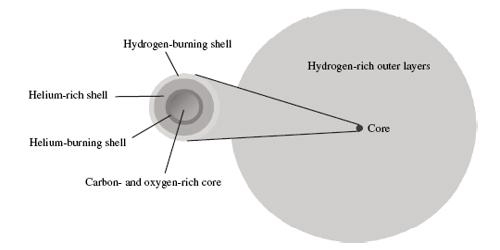
Stars whose masses are comparatively less, the density of the core increases due to contraction and temperature also increases and expansion takes place in the outer part. But the temperature of the principal part does not increase so much as to start helium fusion reaction. Due to the expansion of the outer shell, the size of the star becomes very large and as the temperature decreases, so it appears reddish. This star is called a red giant. Afterwards, it reaches a stage when its outer envelopes disintegrate or tear off. The residue which is left is called white dwarf. With the passage of time, the brightness of white dwarf continues to decrease and reaches a stage when it is called a black dwarf and the death of the star occurs.
But the stars whose masses are very large, contraction of the core becomes more due to the force of gravitational attraction and temperature also increases enormously. When the temperature reaches about 108 degree Celsius then fusion of helium nuclei sets in. In this case, by fusing three helium nuclei a carbon nucleus is formed and along with it an enormous amount of energy is released. This energy creates outward pressure against the gravitational force of attraction and by balancing this attractive force a stable condition is achieved. But the influence of the increase of pressure inside the core is transmitted to the outer envelope and hence the expansion of the envelope continues. That means the size of the star and brightness of it also increase. It comes to a stable state by increasing the size a hundred times than the main sequence star. Due to the expansion of exterior envelope temperature decreases and the star appears reddish. The star of this stage is called supergiant star. When the sun will reach this stage by exhausting its hydrogen fuel, then its size will increase to such an extent that it will swallow most of the planets. Of course, it will take another 6 billion years to reach this stage.
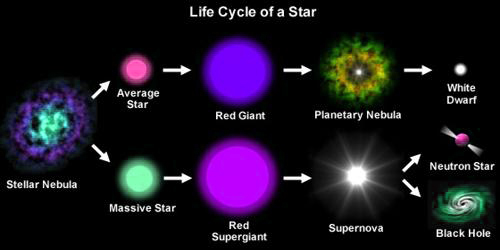
If the size of the star is much larger, then after exhausting helium it uses carbon as fusion material and using other fuels it can reach up to iron. Now a question arises, what next after red giant? The next stage is while dwarf about which we have discussed earlier. We can think, the white dwarf is the last stage of the stars.
Different stars end their life cycle in different ways. Small or medium-size stars often exhausting hydrogen as fuel die silently. The biggest event in their life cycle is the creation of planets of the Nebula family. But much heavier stars than the mass of the sun after exhaustion of their fuels undergo very strong contraction and the density of the principal portion becomes so dense that through a giant explosion they die. This explosion is called Supernova explosion. In 1054, Chinese astronomers observed the explosion of such type of supernova which lasted for a few days, even during daytime it was seen illuminated. Due to this explosion outer envelope breaks into pieces and only the core remains as residue. According to the masses of these residues, some stars are transformed into Neutron stars and others as black holes.
